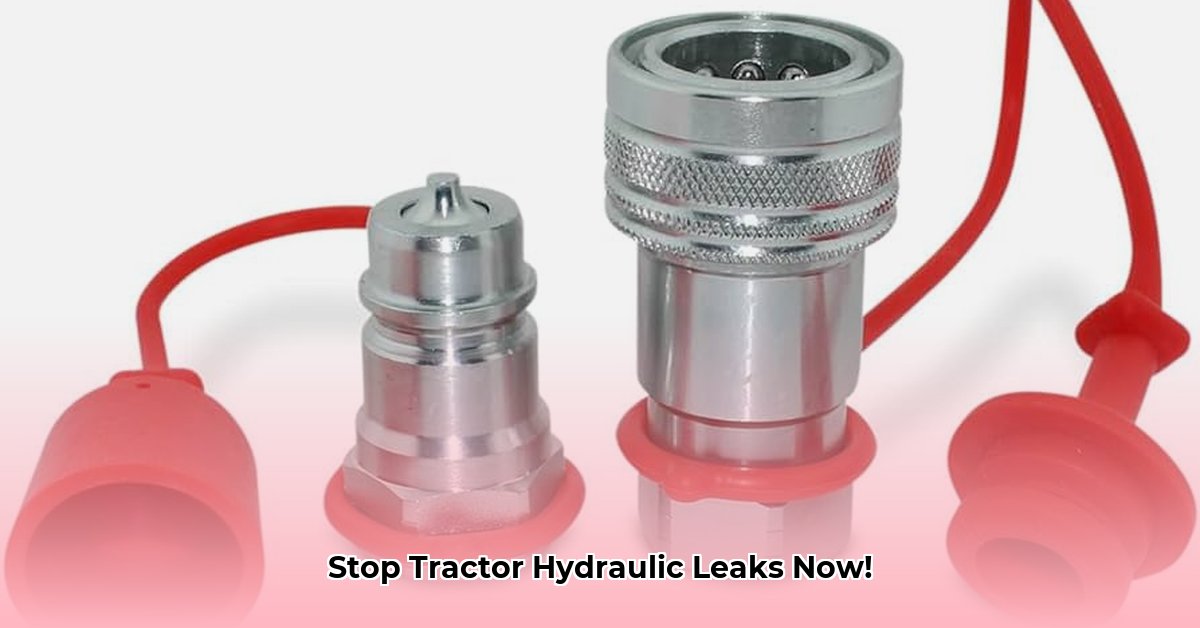
Tractor Hydraulic Connectors: The Unsung Heroes of Farm Efficiency
Your tractor's hydraulic system is the powerhouse behind countless farm operations, from lifting heavy implements to powering complex harvesting machinery. At the heart of this system lie the hydraulic connectors – small but critical components that often get overlooked. Neglecting their maintenance can lead to costly downtime, wasted fuel, environmental pollution from fluid leaks, and even safety hazards. For more in-depth information, see our hydraulic guide. This comprehensive guide will help you understand, maintain, and select the right hydraulic connectors for your farm equipment, maximizing efficiency and sustainability.
Getting to Know Your Hydraulic Connectors
Imagine your tractor's hydraulic system as a network of pipelines carrying pressurized fluid. Hydraulic connectors are the vital joints in this network, responsible for ensuring a continuous and leak-free flow. Several types exist, each suited to different applications:
Quick-Connects: Designed for quick attachment and detachment of implements. While convenient, they might not offer the same leak-resistance as other options. Are quick-connects the best choice for heavy-duty applications or high-pressure systems or is added security worth the extra time spent connecting/disconnecting?
Threaded Fittings: These provide a stronger, more leak-resistant seal compared to quick-connects, making them suitable for high-pressure systems and demanding applications. However, they require more time for connection and disconnection.
Specialized Couplers: These are customized for specific implements and often incorporate additional safety features, such as pressure relief valves. They might require specialized tools or knowledge for installation.
Choosing the Right Connector: A Balancing Act of Pressure and Material
Selecting appropriate hydraulic connectors involves considering two primary factors: pressure rating and material.
Pressure Rating: This indicates the maximum pressure the connector can safely withstand. Using a connector with an inadequate pressure rating can result in catastrophic failure, leading to equipment damage and potential injury. Always consult your tractor's specifications to determine the appropriate pressure rating and choose connectors with a suitable safety margin.
Material: Common materials include steel (strong and durable), brass (corrosion-resistant), and composites (offering specific advantages). The optimal material depends on factors such as the working environment, exposure to chemicals, and the type of hydraulic fluid used. Steel is durable, known for its rugged strength, but brass offers superior resistance to corrosion in certain environments and climate conditions.
Preventative Maintenance: Your Shield Against Costly Downtime
Regular inspection and maintenance are crucial in preventing minor issues escalating into major and costly problems. Here's a straightforward preventative maintenance routine:
Visual Inspection: Regularly examine all connectors for visible signs of damage such as cracks, corrosion, dents, or leaks. A quick visual check can save you a significant number of future headaches.
Tightness Test: Gently check the tightness of all connections. Loose connections are a common cause of leaks. Tighten connections carefully to avoid damaging them. Don’t over-tighten: use a torque wrench for best results.
Pressure Testing: Where feasible, periodically pressure-test your hydraulic system to detect even minor leaks. This allows for early repairs, preventing potential problems from growing.
Replace Damaged Connectors: Promptly replace any damaged connectors. The cost of a replacement is significantly less than the cost of repairing a major system failure.
Troubleshooting Common Hydraulic Connector Issues
Let's address some common problems:
Leaks: Often caused by damaged seals, loose connections, or faulty connectors. Carefully inspect connectors for cracks and ensure all fittings are securely tightened. Replacement might be necessary if seals are damaged.
Poor Coupling Engagement: This can occur if coupling surfaces are dirty. Thoroughly clean the coupling surfaces before connecting.
Loose Connections: Vibration or wear can lead to loose connections, especially in frequently used connectors. Tighten these connections, being careful not to over-tighten.
Sustainability and Hydraulic Connectors: A Greener Approach to Farming
Hydraulic fluid leaks are detrimental to both your equipment and the environment. Leaks waste valuable fluid, increasing operational costs, and release potentially harmful chemicals into the soil and groundwater. Implementing regular maintenance practices contributes to a more sustainable farming operation, reducing both your environmental impact and operational expenses.
Choosing the Right Connector: A Quick Reference Guide
| Feature | Quick-Connects | Threaded Fittings | Specialized Couplers |
|---|---|---|---|
| Ease of Connection | High | Medium | Low |
| Leak Resistance | Lower | Higher | High |
| Cost | Lower | Medium | Higher |
| Typical Applications | General Purpose | High Pressure Lines | Specific Implements |
Conclusion: Small Steps, Big Impact
By implementing a preventative maintenance routine, making informed connector selections, and troubleshooting issues efficiently, you will significantly improve the reliability and efficiency of your tractor's hydraulic system. Ultimately, this leads to increased productivity, reduced costs, and a more sustainable farming operation. Remember, proactive maintenance is a small investment that yields substantial long-term returns.